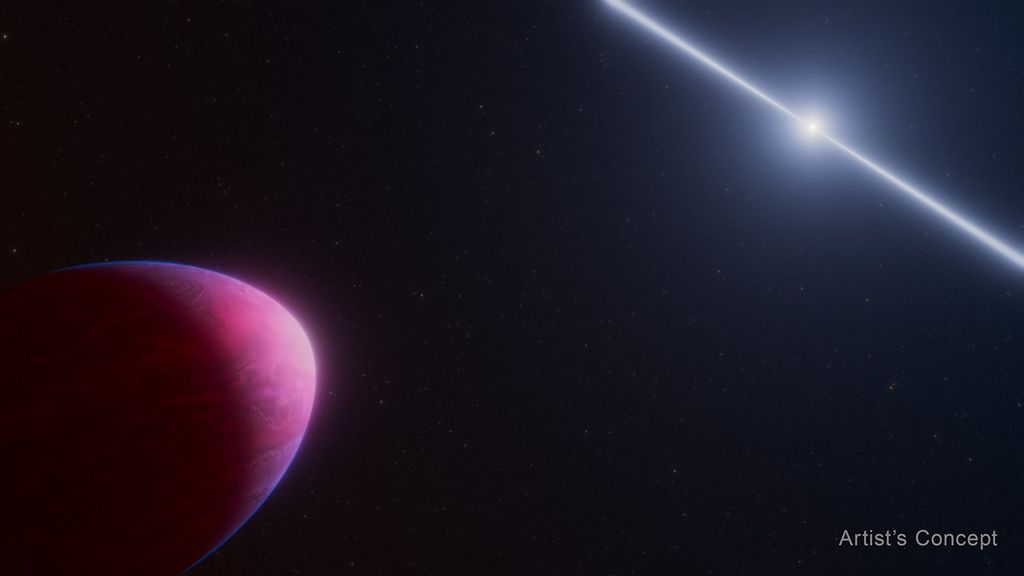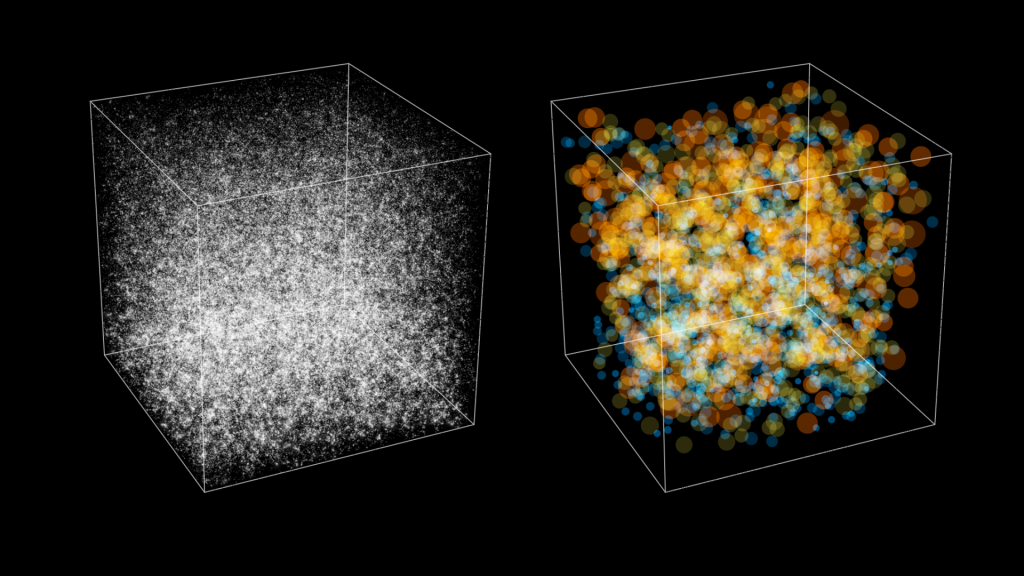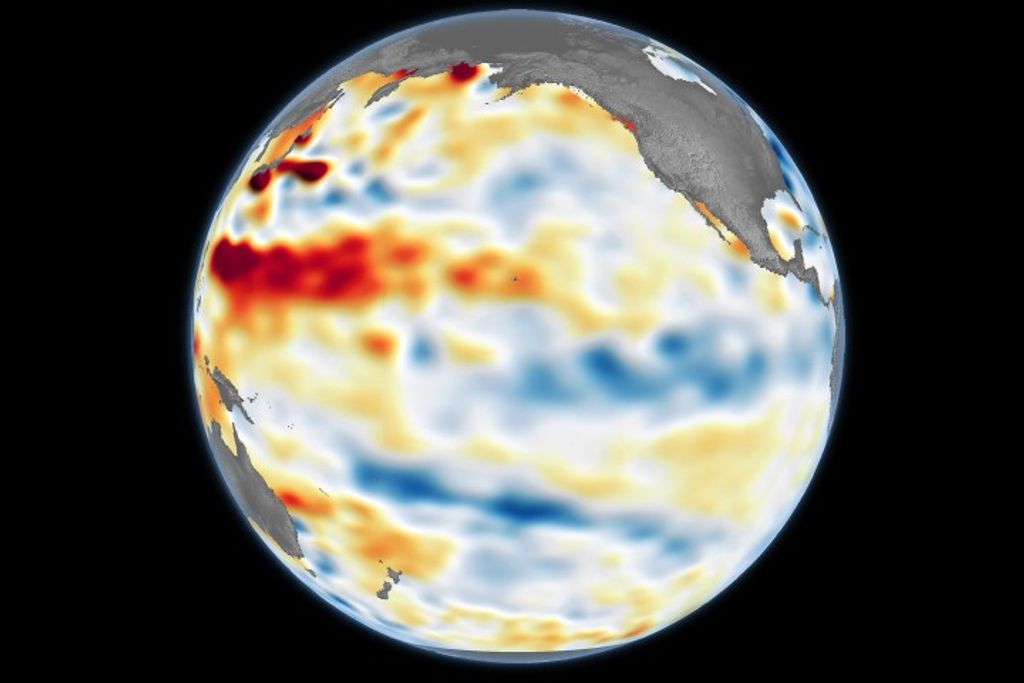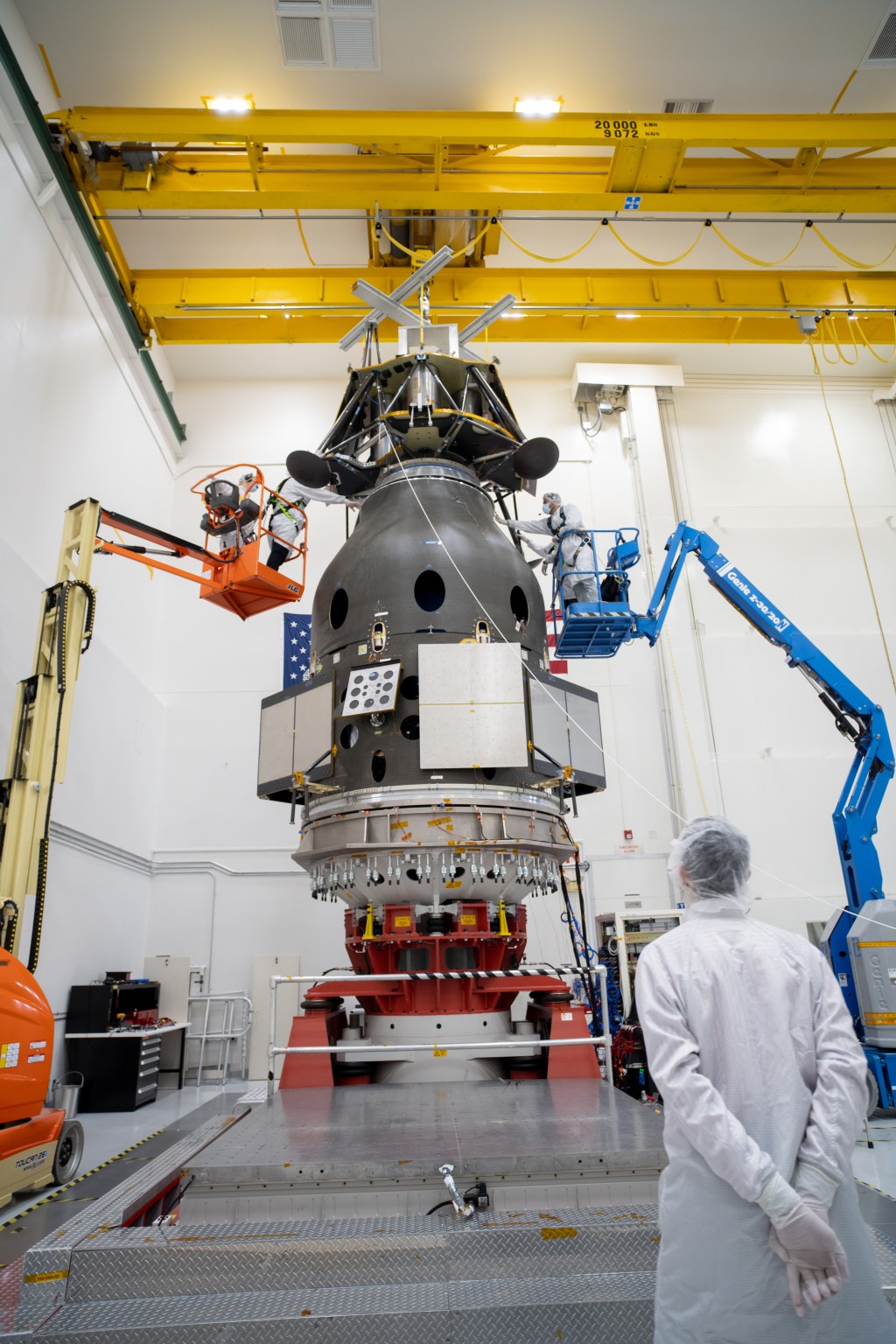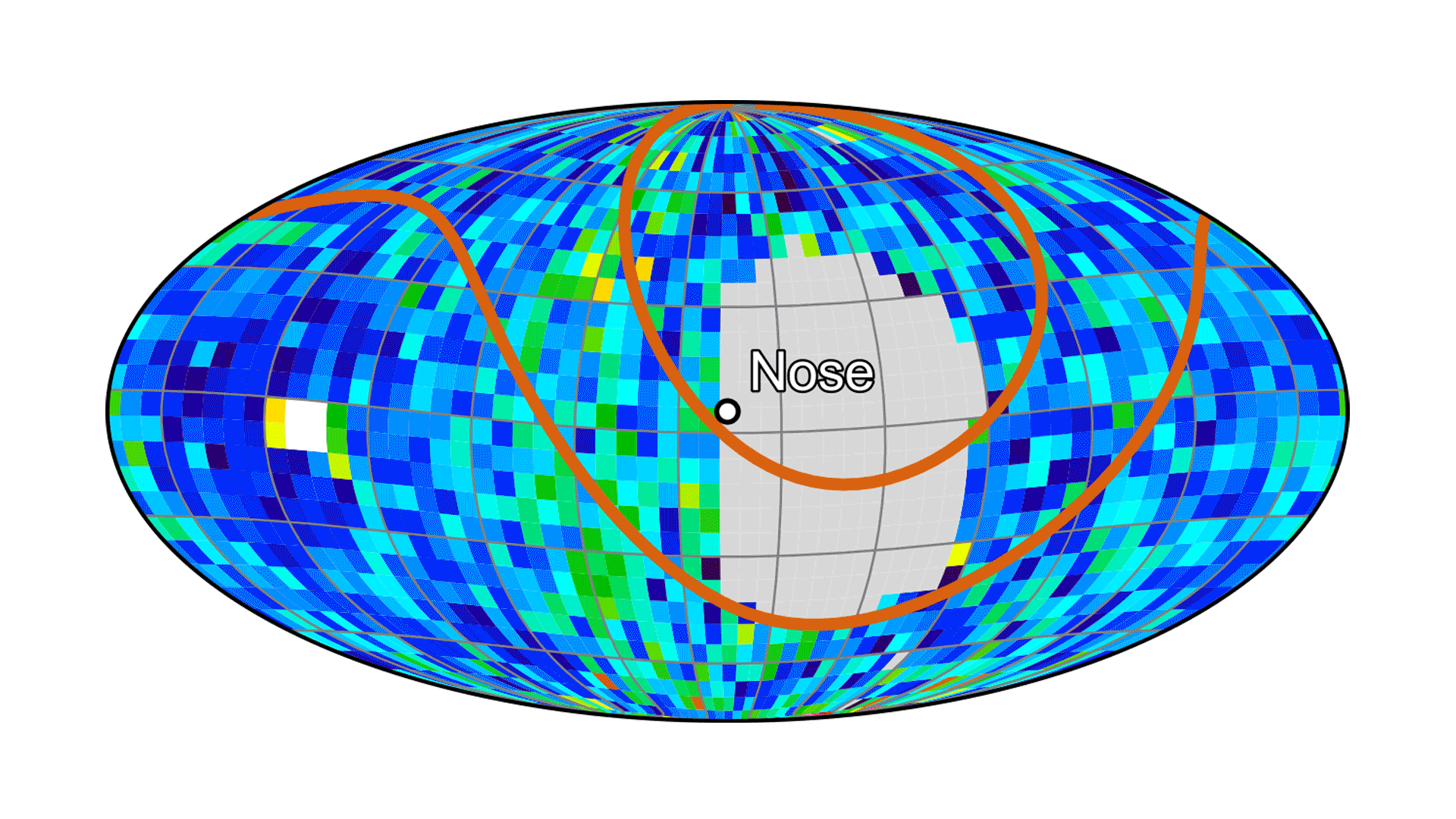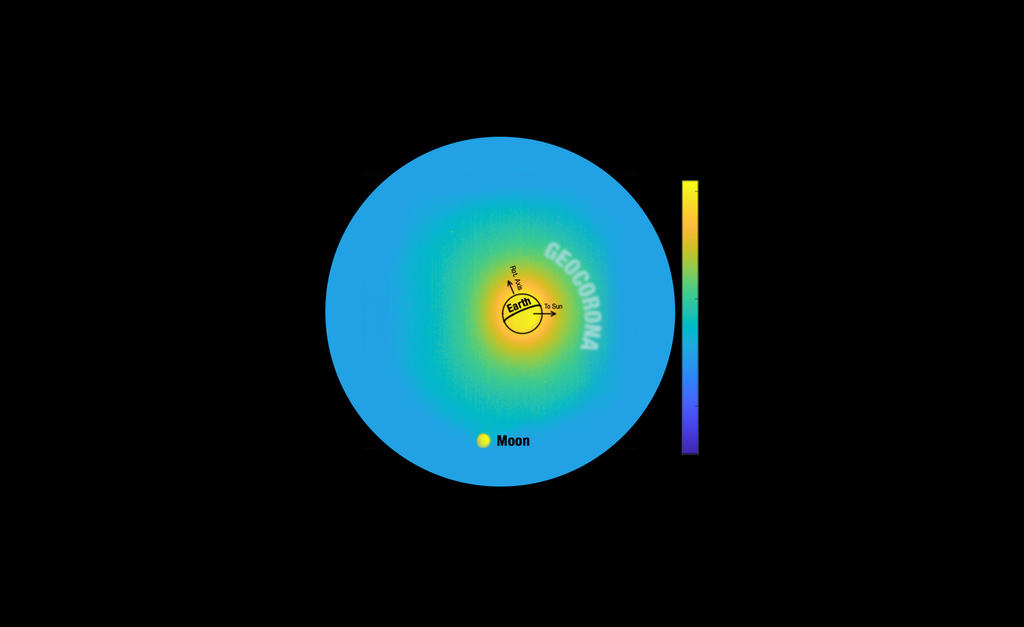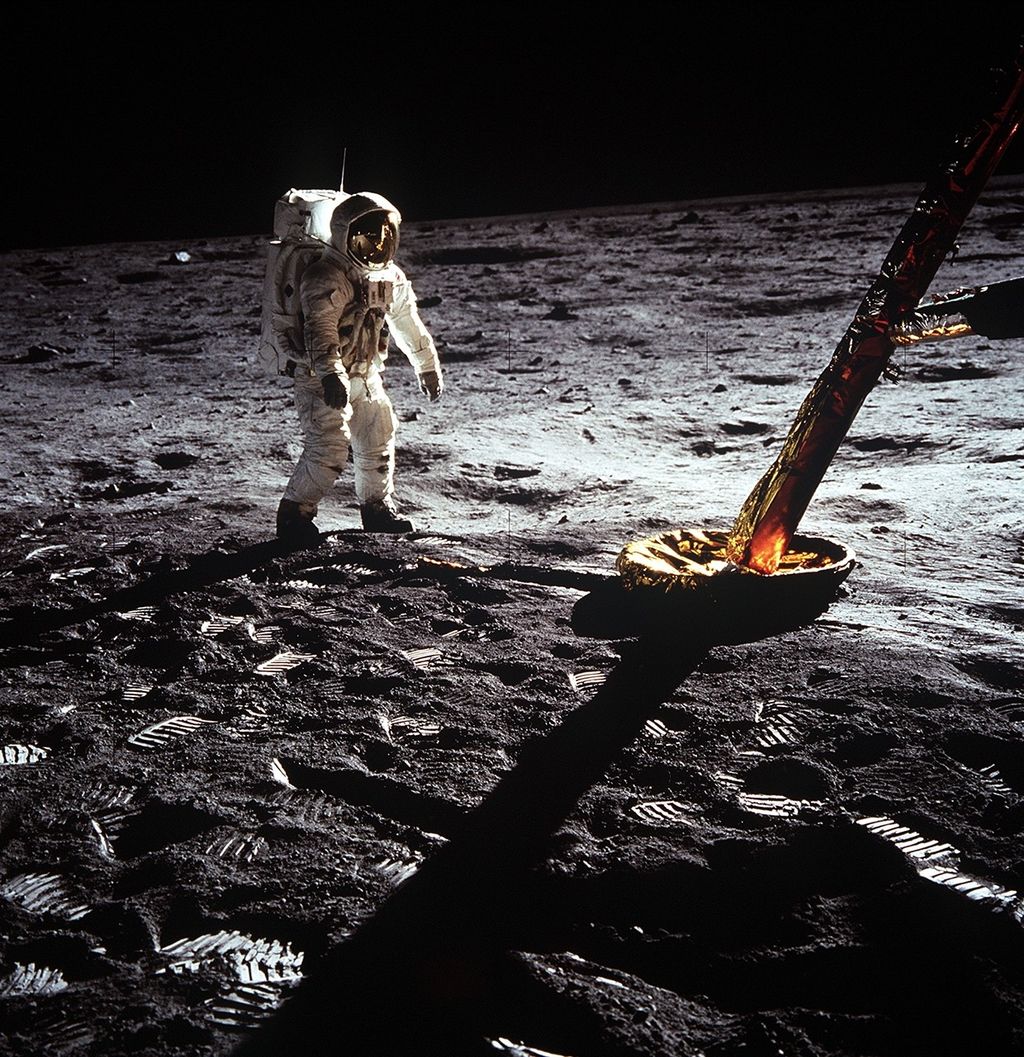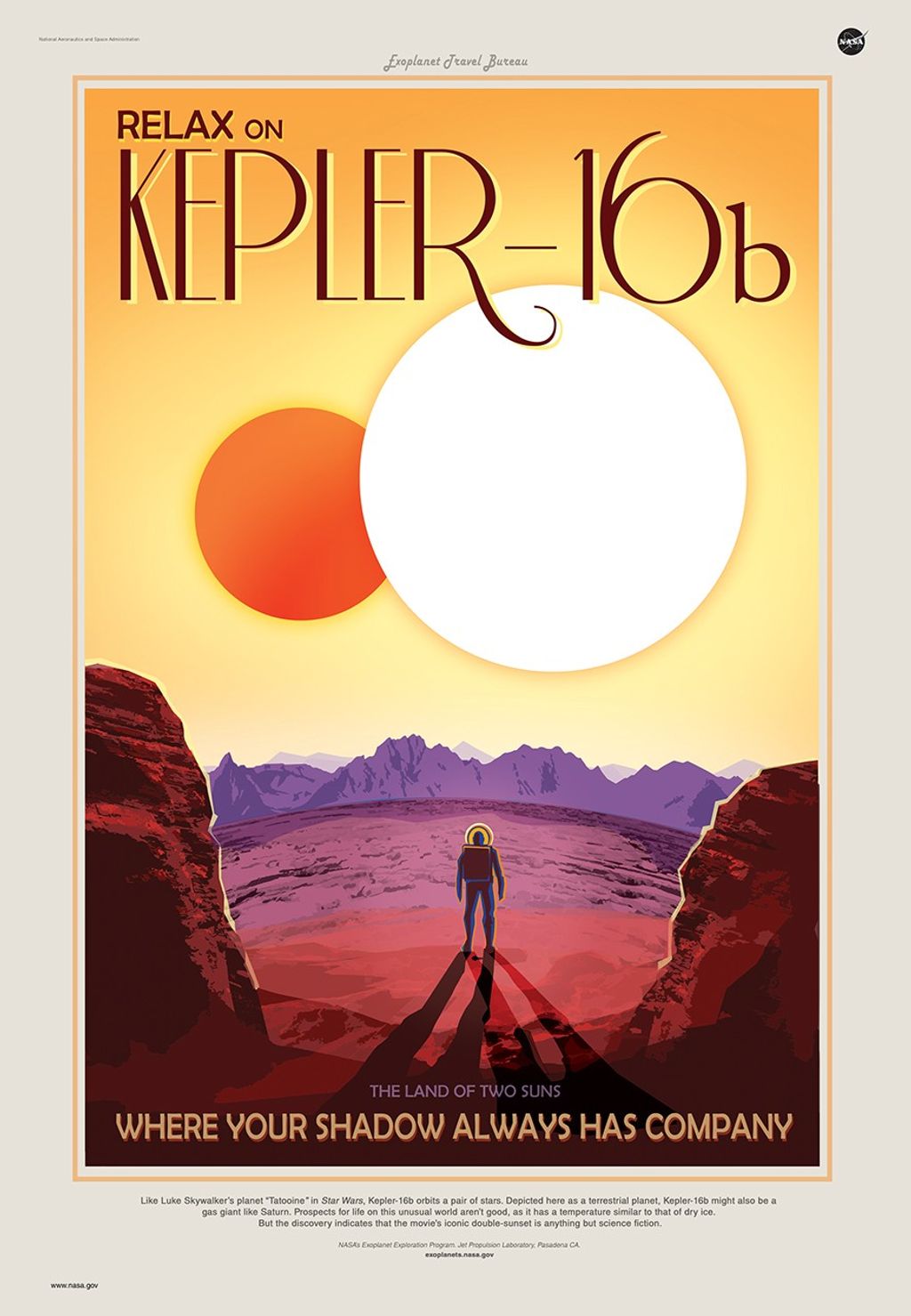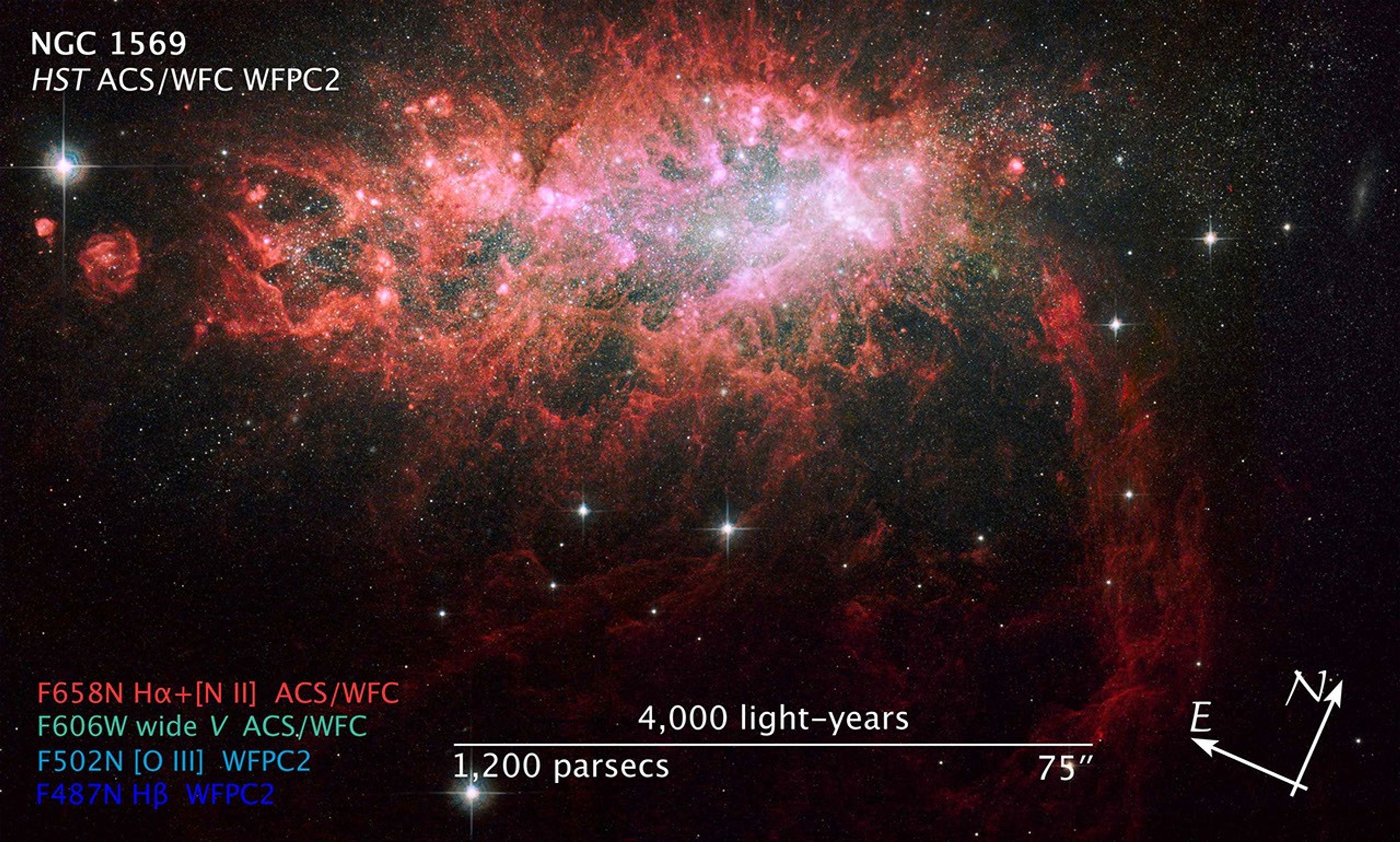1 min read
Starburst Galaxy NGC 1569

This image taken by NASA's Hubble Space Telescope showcases the brilliant core of one of the most active galaxies in our local neighborhood. The entire core is 5,000 light-years wide.
The galaxy, called NGC 1569, sparkles with the light from millions of newly formed young stars. NGC 1569 is pumping out stars at a rate that is 100 times faster than the rate observed in our Milky Way Galaxy. This frenzied pace has been almost continuous for the past 100 million years.
The core's centerpiece is a grouping of three giant star clusters, each containing more than a million stars. (Two of the clusters are so close they appear as one grouping.) The clusters reside in a large, central cavity. The gas in the cavity has been blown out by the multitude of massive, young stars that already exploded as supernovae. These explosions also triggered a violent flow of gas and particles that is sculpting giant gaseous structures. The sculpted structure at lower right is about 3,700 light-years long.
Huge bubbles of gas, such as the two at left, appear like floating islands. The largest bubble is about 378 light-years wide and the smallest 119 light-years wide. They are being illuminated by the radiation from the bright, young stars within them. Some of those stars are peeking through their gaseous cocoons.
The biggest and brightest objects surrounding the core are stars scattered throughout our Milky Way Galaxy. In contrast, the thousands of tiny white dots in the image are stars in the halo of NGC 1569. The galaxy is 11 million light-years from Earth.
A new analysis of NGC 1569 shows that it is one and a half times farther from Earth than astronomers previously thought. The extra distance places the galaxy in the middle of a group of about 10 galaxies centered on the spiral galaxy IC 342. Gravitational interactions among the group's galaxies may be compressing gas in NGC 1569 and igniting the star-birthing frenzy.
Hubble's Wide Field Planetary Camera 2 and Advanced Camera for Surveys made the observations of NGC 1569 in September 1999, November 2006, and January 2007.
About the Object
- R.A. PositionR.A. PositionRight ascension – analogous to longitude – is one component of an object's position.04h 30m 49.0s
- Dec. PositionDec. PositionDeclination – analogous to latitude – is one component of an object's position.64° 50' 52.0"
- ConstellationConstellationOne of 88 recognized regions of the celestial sphere in which the object appears.Camelopardalis
- DistanceDistanceThe physical distance from Earth to the astronomical object. Distances within our solar system are usually measured in Astronomical Units (AU). Distances between stars are usually measured in light-years. Interstellar distances can also be measured in parsecs.11 million light-years (3.4 megaparsecs)
- DimensionsDimensionsThe physical size of the object or the apparent angle it subtends on the sky.This image is roughly 2.7 arcminutes (8,700 light-years or 2,700 parsecs) wide.
About the Data
- Data DescriptionData DescriptionProposal: A description of the observations, their scientific justification, and the links to the data available in the science archive.
Science Team: The astronomers who planned the observations and analyzed the data. "PI" refers to the Principal Investigator.HST Proposal: 8133 P. Shopbell (Caltech), R. Dufour (Rice University), D. Walter (South Carolina State University), and A. Wilson (University of Maryland) HST Proposal: 10885 A. Aloisi (STScI/ESA) et al. The science team includes: A. Aloisi (STScI/ESA), L. Angeretti (Astronomical Observatory of Bologna/INAF), F. Annibali and L. Greggio (Astronomical Observatory of Padua/INAF), A. Grocholski (STScI), E. Held (Astronomical Observatory of Padua/INAF), J. Mack (STScI), D. Romano (Astronomical Observatory of Bologna/INAF), M. Sirianni (STScI/ESA), M. Tosi (Astronomical Observatory of Bologna/INAF), and R. van der Marel (STScI). - InstrumentInstrumentThe science instrument used to produce the data.HST>ACS/WFC and HST>WFPC2
- Exposure DatesExposure DatesThe date(s) that the telescope made its observations and the total exposure time.September 1999, November 2006, and January 2007
- FiltersFiltersThe camera filters that were used in the science observations.ACS: F658N (H-alpha + [N II]) and F606W (wide V) WFPC2: F502N ([O III]), F487 (H-beta)
- Object NameObject NameA name or catalog number that astronomers use to identify an astronomical object.NGC 1569
- Object DescriptionObject DescriptionThe type of astronomical object.Dwarf Irregular Galaxy
- Release DateNovember 20, 2008
- Science ReleaseHubble Resolves Puzzle about Loner Starburst Galaxy
- CreditCredit for Advanced Camera Data: NASA, ESA, A. Aloisi (STScI/ESA), J. Mack and A. Grocholski (STScI), M. Sirianni (STScI/ESA), R. van der Marel (STScI), L. Angeretti, D. Romano, and M. Tosi (INAF-OAB), and F. Annibali, L. Greggio, and E. Held (INAF-OAP); Credit for Wide Field Planetary Camera 2 Data: NASA, ESA, P. Shopbell (California Institute of Technology), R. Dufour (Rice University), D. Walter (South Carolina State University, Orangeburg), and A. Wilson (University of Maryland, College Park) Image Credit: NASA, ESA, the Hubble Heritage Team (STScI/AURA), and A. Aloisi (STScI/ESA)

The image is a composite of separate exposures made by the ACS and WFPC2 instruments on the Hubble Space Telescope. Three filters were used to sample narrow-wavelength ranges. One filter was used to sample broad wavelengths. The color results from assigning different hues (colors) to each monochromatic image. In this case, the assigned colors are: Red: F658N (H-alpha + [N II]) Green/cyan: F606W (wide V) Cyan: F502N ([O III]) Blue: F487 (H-beta)
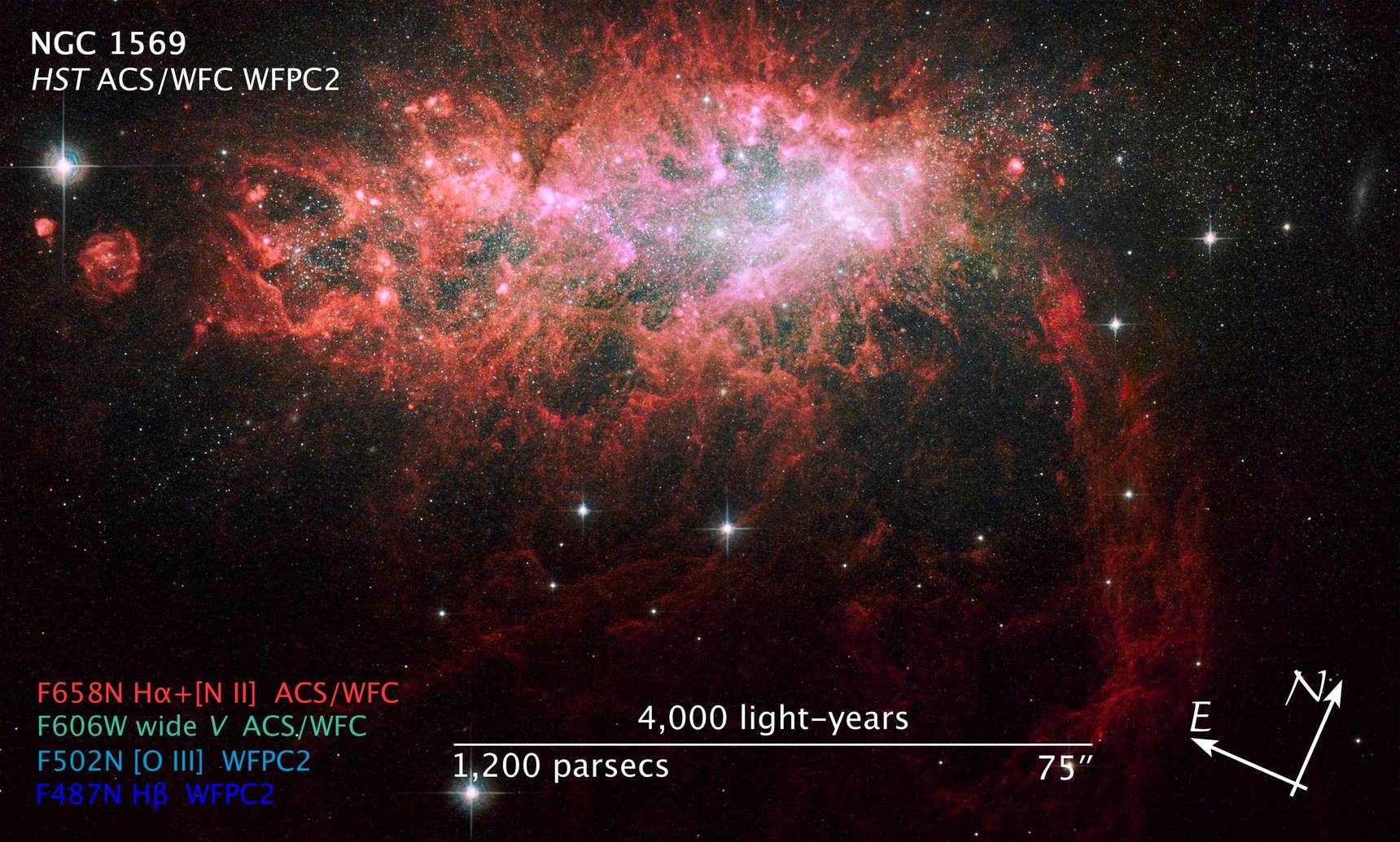
Related Images & Videos

Large-Field Hubble Image of Starburst Galaxy NGC 1569
NASA's Hubble Space Telescope has imaged one of the most active galaxies in our local neighborhood. NGC 1569, sparkles with the light from millions of newly formed young stars. At the nucleus of the starburst galaxy is a grouping of three giant star clusters, each containing...
Share
Details
Claire Andreoli
NASA’s Goddard Space Flight Center
Greenbelt, Maryland
claire.andreoli@nasa.gov


